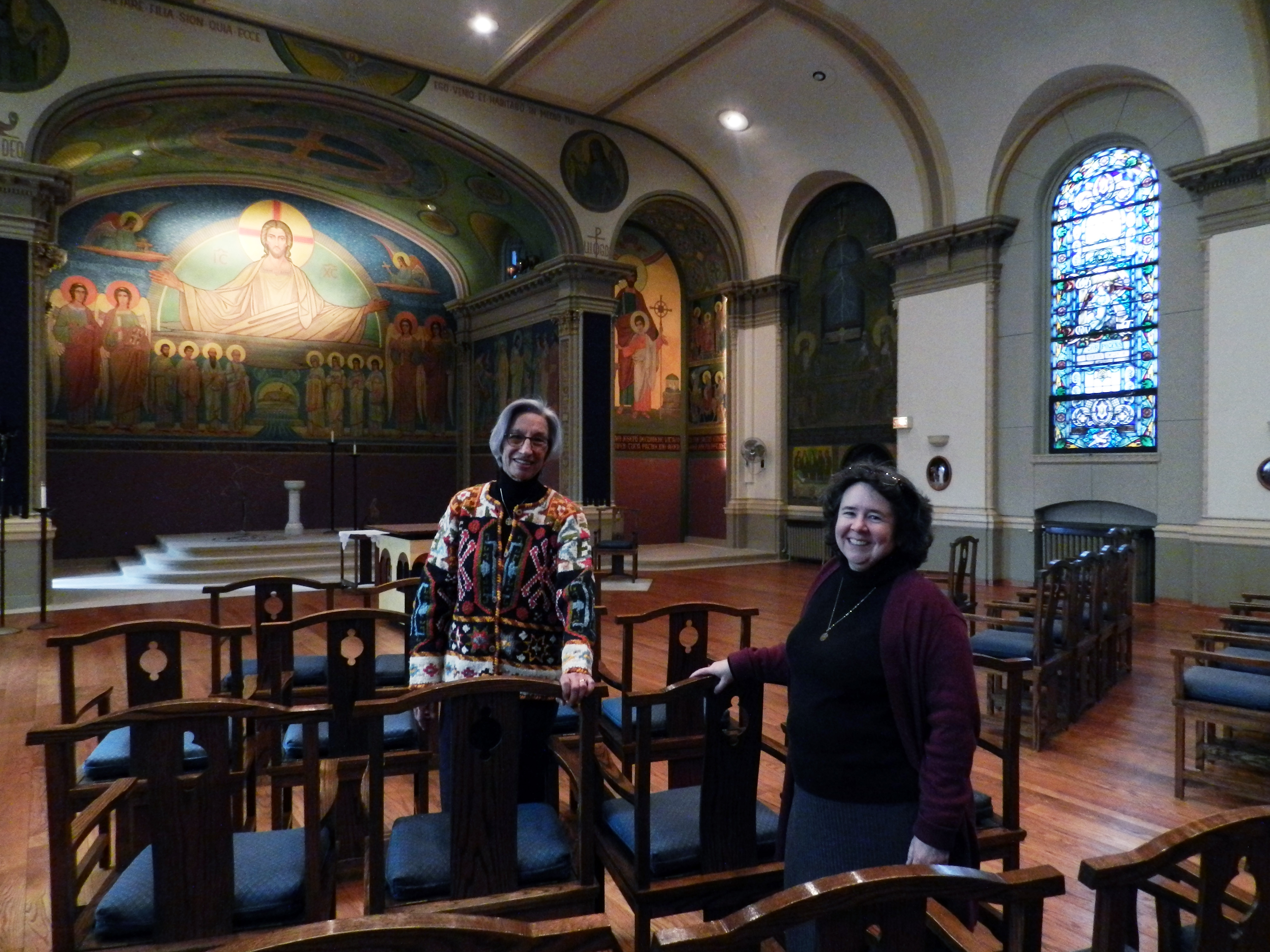
A Nun's Life welcomes guest blogger Sister Belinda Monahan, OSB, who writes about her experience of being a Sister with the Benedictine Sisters of Chicago, Illinois.
I was not one of those discerners who walked into the monastery and instantly knew I was at home. The process of getting to know my community and to feel certain that I was called to live religious life with this specific group of women was, for me, a slow process. While getting to know the women in the community was my primary means of discernment, I found also that the material culture—the furniture and the objects used every day—also helped me to feel as though I could be at home in this space, to become part of the community. The ways in which we use our “stuff” tells stories about who we are and the things that are important to us, and these things helped shape my discernment.
The chairs in the chapel were the first thing that I noticed. When I started attending Mass with the community regularly, one of the taller Sisters took me aside. She pointed out that the chapel chairs are two different sizes—one about two inches shorter than the other. When the chapel was being renovated in the 1980s, the community was nearly evenly split in their size preferences. Rather than make liturgy uncomfortable for almost half the Sisters, the community made the decision to provide chairs of different sizes. Attention to the needs of the individual Sisters did not take precedence over a desire for uniformity for its own sake.
Another place where I recognized the ways in which our “stuff” reflected who we are as community was in the dining room. When I first entered, I noticed that when Sisters sat down at a table, they would set napkins out, not just for themselves, but at each place at the table. A Sister sitting down later would feel welcomed at the table and would have at least one of her basic needs seen to before she even sat down.
When I first started discerning, these objects helped me see that I could live as part of this community. Now that I have been here for over ten years, each time I walk into the chapel or the dining room, these physical objects remind me of the reality of living with a diverse group of women who are striving to live life daily in community, as we tend to each other’s needs while our own are being met. These physical objects do more than reflect our commitment to community, they shape it and they make it real.


